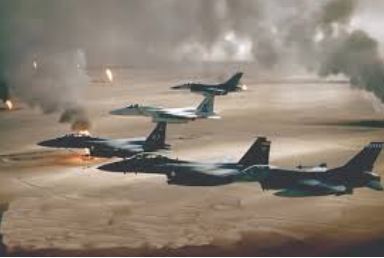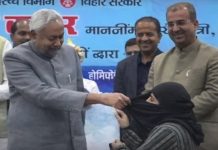by: Ertaan Siddiqui
A Tale of Two Arenas: Cricket and Combat
The “Mauqa Mauqa” advertisement has become a staple of cricket broadcasts whenever the most anticipated clash in world cricket—India vs. Pakistan—takes place. Regardless of the venue of the game and menu of players on offer, the outcome has consistently been unfavorable for the Pakistani audience in the recent past. This recurring disappointment has started to affect the spirit surrounding these encounters.
Much like the cricket pitch, the skies above South Asia have long served as symbolic arenas of national pride. However, in aerial engagements, the Pakistan Air Force has historically reversed the cricketing narrative. With favorable outcomes during 1965 & 1971 wars, stand-offs during the Kargil conflict, 2/0 in the 2019 post-Pulwama skirmishes, and 6/0 in the 2025 Operation Bunyan-ul-Marsoos, Pakistan Air Force has consistently outsmarted, outmaneuvered, and outclassed the Indian Air Force in air-to-air combat, carving out what may be called a “Rare Superiority”—a phrase that not only echoes the technical term “Air Superiority,” but also resonates with the strategic edge Pakistan has maintained in the skies.
Foundations of Strength: The Origins and Early Challenges
Born out of the Royal Indian Air Force, both PAF and IAF began from the same foundation. At Partition, Pakistan inherited just 17 percent of the military assets, many of which were stranded in Indian territory. Financial and logistical obstructions, largely influenced by the Congress leadership, aimed to pressure the nascent Pakistani state. Despite these constraints, the PAF rose rapidly, overcoming adversity through resilience and resolve.
PAF’s Tactical and Strategic Mastery
Throughout history, the PAF has countered IAF misadventures with clinical precision. From Flying Officer Mukhtar Ahmed Dogar’s daring evasion in 1948 to M.M. Alam’s legendary one-minute dogfight, PAF pilots have etched their names into the annals of air combat. Wing Commander Noman Ali Khan and Squadron Leader Hassan Siddiqui reaffirmed this legacy during Operation Swift Retort in 2019.
In Operation Bunyan-ul-Marsoos (2025), the PAF delivered a decisive response, downing six Indian aircraft, including three Rafales—4.5-generation fighter jets touted as game-changers for the IAF. This overwhelming performance left India with no choice but to seek a ceasefire, having underestimated Pakistan’s response.
Leadership’s Vision : The Cornerstone of Success
The Latin maxim, “Per proelia victoria belli fatum statuit”—“Through battles, victory determines the fate of war”—perfectly encapsulates the ethos of the PAF.
How did PAF mange to achieve this feat despite the material challenges and resource constraints?
PAF’s success in these encounters was a result of numerous factors but none more significant than its visionary leadership. From Air Marshal Asghar Khan—rightly hailed as the father of the PAF—to Air Marshal Nur Khan, known for his steady hand during times of crisis, and extending to the Air Chief Marshal Zaheer Ahmed Baber Sidhu, each has pursued an ambitious agenda to modernize the force. In essence, PAF leadership has consistently looked beyond the horizon, strived to shape a future that seemed distant or even unimaginable at the time. The relentless push for modernization has remained central to their strategic efforts.
Full Spectrum Multi Domain Warfare
Despite its success after the Balakot strikes, the PAF avoided complacency and swiftly adapted to India’s induction of Rafale jets. To retain its edge, it operationalized the J-10C aircraft equipped with PL-15E BVR missiles, reestablishing superiority in air-to-air combat. Recognizing the evolving nature of warfare, PAF adopted a multidimensional modernization strategy that integrated advanced platforms and focused on developing indigenous capabilities—cementing its position as the region’s only air force with homegrown niche technologies.
Modern aerial warfare now extends beyond dogfights, merging air, space, cyber, and electronic warfare domains. In response, PAF expanded its arsenal with fighter jets, UAVs, air mobility assets, and reinforced its air defense, EW, and space capabilities. It has also developed robust cyber and space defenses, transforming former vulnerabilities into strengths. These comprehensive upgrades, driven by visionary leadership, reflect PAF’s strategic foresight and readiness to meet emerging threats with integrated, multi-domain superiority.
Indigenous Innovation: The Power of Self-Reliance
The ever-growing demands of a tech-sensitive and tech-intensive air force cannot be met through foreign acquisitions alone. Such reliance burdens the national exchequer and is increasingly difficult amid global restrictions on high-end technologies. As such, indigenous R&D has become imperative. The PAF leadership has launched an ambitious yet sustainable strategy to build national capacity for research and development.
At the heart of this effort lies the National Aerospace Science and Technology Park (NASTP). With a strong emphasis on industry-academia collaboration, realized through public-private partnership with domestic and international partners, NASTP has rapidly evolved into a project of national significance—deserving a detailed discussion of its own.
Excellence Through Adaptation
The Pakistan Air Force has carved a unique niche in regional military history—defined not by sheer numbers but by quality, clarity of vision, and operational finesse. Driven by the vision of its leadership, PAF has emerged as a technologically adept, strategically agile, and professionally superior air force. PAF’s “Rare Superiority” is not just a military reality but a strategic benchmark. It stands as a defining pillar of Pakistan’s national defense, recognized globally, and respected by allies and adversaries alike.

















